 Your new post is loading...
 Your new post is loading...

|
Scooped by
BigField GEG Tech
March 4, 6:42 AM
|
The programmable proteins are compact, modular, and can be directed to modify DNA in human cells.

|
Scooped by
BigField GEG Tech
February 10, 5:50 AM
|
Findings from a multi-institutional, international study led by researchers from the Mayo Clinic Comprehensive Cancer Center have significantly advanced the understanding of genetic alterations in the BRCA2 gene, a key player in hereditary cancer risk.

|
Scooped by
BigField GEG Tech
January 16, 6:51 AM
|
The DNA-PKcs inhibitor AZD7648 enhances CRISPR–Cas9-directed homology-directed repair efficiencies, with potential for clinical utility, but its possible on-target consequences are unknown. We found that genome editing with AZD7648 causes frequent kilobase-scale and megabase-scale deletions, chromosome arm loss and translocations. These large-scale chromosomal alterations evade detection through typical genome editing assays, prompting caution in deploying AZD7648 and reinforcing the need to investigate multiple types of potential editing outcomes. A compound that enhances homology-directed repair in CRISPR editing leads to genome instability.

|
Scooped by
BigField GEG Tech
January 6, 7:09 AM
|
Researchers developed SNIPRs, innovative receptors that sense soluble ligands, enabling precise therapeutic control in CAR T-cells. This breakthrough enhances tumor targeting while reducing off-target effects, paving the way for advanced synthetic biology applications.

|
Scooped by
BigField GEG Tech
December 3, 2024 6:33 AM
|
When used to edit genomes, Cas9 nucleases produce targeted double-strand breaks in DNA. Subsequent DNA-repair pathways can induce large genomic deletions (larger than 100 bp), which constrains the applicability of genome editing. Here we show that Cas9-mediated double-strand breaks induce large deletions at varying frequencies in cancer cell lines, human embryonic stem cells and human primary T cells, and that most deletions are produced by two repair pathways: end resection and DNA-polymerase theta-mediated end joining. These findings required the optimization of long-range amplicon sequencing, the development of a k-mer alignment algorithm for the simultaneous analysis of large DNA deletions and small DNA alterations, and the use of CRISPR-interference screening. Despite leveraging mutated Cas9 nickases that produce single-strand breaks, base editors and prime editors also generated large deletions, yet at approximately 20-fold lower frequency than Cas9. We provide strategies for the mitigation of such deletions. DNA repair after Cas9-mediated double-strand breaks induces large DNA deletions at frequencies 20-fold higher than elicited by base editors and prime editors leveraging Cas9 nickases producing single-strand breaks.

|
Scooped by
BigField GEG Tech
November 7, 2024 6:46 AM
|
In the fight against cancer, chimeric antigen receptor T cell (CAR-T) therapy has achieved notable success in treating blood cancers. However, it has been largely ineffective against solid tumors.

|
Scooped by
BigField GEG Tech
October 28, 2024 11:13 AM
|
Researchers in the US report a potentially new therapeutic strategy for amyotrophic lateral sclerosis (ALS) and frontotemporal dementia (FTD). Using an optimised Cas13d-based RNA targeting system, they demonstrate significant in vitro and in vivo reduction of the RNA repeat mutations most commonly identified in patients with ALS or FTD.

|
Scooped by
BigField GEG Tech
October 8, 2024 9:48 AM
|
The treatment’s success in three people raises hopes for mass production of cutting-edge CAR T therapies.

|
Scooped by
BigField GEG Tech
September 30, 2024 6:02 AM
|
Mayo Clinic researchers mined the molecular foundations of cancer and uncovered a new reason chimeric antigen receptor (CAR-T cell therapy) fails in some patients.

|
Scooped by
BigField GEG Tech
September 10, 2024 5:06 AM
|
The effectiveness of CAR T cell therapy against a variety of cancers, including solid tumors, could be boosted greatly by using CRISPR-Cas9 technology to knock out the gene for CD5, a protein found on the surface of T cells, according to a preclinical study from investigators at the University of Pennsylvania's Perelman School of Medicine and Abramson Cancer Center.

|
Scooped by
BigField GEG Tech
September 6, 2024 3:50 AM
|
Early findings from a small clinical trial provide evidence that a new cellular immunotherapy approach may be effective in treating metastatic solid tumors. In the trial, researchers from the National Institutes of Health (NIH) genetically engineered normal white blood cells, known as lymphocytes, from each patient to produce receptors that recognize and attack their specific cancer cells.

|
Scooped by
BigField GEG Tech
July 11, 2024 9:12 AM
|
Microbiome research is now demonstrating a growing number of bacterial strains and genes that affect our health1. Although CRISPR-derived tools have shown great success in editing disease-driving genes in human cells2, we currently lack the tools to achieve comparable success for bacterial targets in situ. Here we engineer a phage-derived particle to deliver a base editor and modify Escherichia coli colonizing the mouse gut. Editing of a β-lactamase gene in a model E. coli strain resulted in a median editing efficiency of 93% of the target bacterial population with a single dose. Edited bacteria were stably maintained in the mouse gut for at least 42 days following treatment. This was achieved using a non-replicative DNA vector, preventing maintenance and dissemination of the payload. We then leveraged this approach to edit several genes of therapeutic relevance in E. coli and Klebsiella pneumoniae strains in vitro and demonstrate in situ editing of a gene involved in the production of curli in a pathogenic E. coli strain. Our work demonstrates the feasibility of modifying bacteria directly in the gut, offering a new avenue to investigate the function of bacterial genes and opening the door to the design of new microbiome-targeted therapies. Edited bacteria were stably maintained in mouse gut for at least 42 days following the delivery of a base editor using an engineered phage-derived particle to modify Escherichia coli colonizing the gut.

|
Scooped by
BigField GEG Tech
June 17, 2024 5:05 AM
|
A team at Montana State University published research this week that shows how RNA, the close chemical cousin to DNA, can be edited using CRISPRs.
|

|
Scooped by
BigField GEG Tech
February 20, 12:00 PM
|
CAR T cell therapy is one of the most promising new cancer treatments to emerge in recent years. It involves removing a patient's own immune T cells and engineering them to recognize specific targets on the surface of the cancer cell.

|
Scooped by
BigField GEG Tech
January 20, 7:03 AM
|
An emerging class of anticancer drugs called EZH2 inhibitors may greatly enhance the potency of some cancer immunotherapies, according to a preclinical study led by Weill Cornell Medicine lymphoma researchers.

|
Scooped by
BigField GEG Tech
January 13, 11:02 AM
|
Researchers have found a way to program immune cells to attack glioblastoma and treat the inflammation of multiple sclerosis in mice.

|
Scooped by
BigField GEG Tech
December 9, 2024 7:03 AM
|
As cancer cells grow, they pump out metabolic byproducts such as lactic acid into the tumor microenvironment. Exhausted T cells -; which have lost their cancer-fighting oomph -; consume this lactic acid, which further saps their energy, according to new research from the University of Pittsburgh and UPMC Hillman Cancer Center.

|
Scooped by
BigField GEG Tech
November 18, 2024 6:41 AM
|
Imagine a world where your own immune cells are transformed into cancer-fighting superheroes.

|
Scooped by
BigField GEG Tech
October 30, 2024 7:29 AM
|
Multiple approaches aim to counteract mutant genes by fixing the faulty RNA they produce

|
Scooped by
BigField GEG Tech
October 23, 2024 9:30 AM
|
Glioblastoma is the most common and most aggressive primary brain tumor, with an average survival after diagnosis of less than two years, and against which current treatments remain ineffective.

|
Scooped by
BigField GEG Tech
October 4, 2024 5:22 AM
|
Disabling a gene involved in metabolism rejuvenates cells’ ability to spin off new neurons.

|
Scooped by
BigField GEG Tech
September 23, 2024 8:16 AM
|
Resistance to genotoxic therapies and tumor recurrence are hallmarks of glioblastoma (GBM), an aggressive brain tumor. In this study, we investigated functional drivers of post-treatment recurrent GBM through integrative genomic analyses, genome-wide genetic perturbation screens in patient-derived GBM models and independent lines of validation. Specific genetic dependencies were found consistent across recurrent tumor models, accompanied by increased mutational burden and differential transcript and protein expression compared to its primary GBM predecessor. Our observations suggest a multi-layered genetic response to drive tumor recurrence and implicate PTP4A2 (protein tyrosine phosphatase 4A2) as a modulator of self-renewal, proliferation and tumorigenicity in recurrent GBM. Genetic perturbation or small-molecule inhibition of PTP4A2 acts through a dephosphorylation axis with roundabout guidance receptor 1 (ROBO1) and its downstream molecular players, exploiting a functional dependency on ROBO signaling. Because a pan-PTP4A inhibitor was limited by poor penetrance across the blood–brain barrier in vivo, we engineered a second-generation chimeric antigen receptor (CAR) T cell therapy against ROBO1, a cell surface receptor enriched across recurrent GBM specimens. A single dose of ROBO1-targeted CAR T cells doubled median survival in cell-line-derived xenograft (CDX) models of recurrent GBM. Moreover, in CDX models of adult lung-to-brain metastases and pediatric relapsed medulloblastoma, ROBO1 CAR T cells eradicated tumors in 50–100% of mice. Our study identifies a promising multi-targetable PTP4A–ROBO1 signaling axis that drives tumorigenicity in recurrent GBM, with potential in other malignant brain tumors. Functional CRISPR screens in patient-matched pre-treatment and post-treatment glioblastoma models identify the PTP4A–ROBO1 axis as a driver of tumorigenicity and enriched ROBO1 expression in recurrent glioblastoma that can be targeted with CAR T cell therapy.

|
Scooped by
BigField GEG Tech
September 9, 2024 5:17 AM
|
CAR-T cell therapy, which targets a specific protein on the surface of cancer cells, causes tumors to shrink or disappear in about half of patients with large B-cell lymphoma who haven't experienced improvement with chemotherapy treatments.

|
Scooped by
BigField GEG Tech
July 31, 2024 9:08 AM
|
Prion disease is caused by misfolding of the prion protein (PrP) into pathogenic self-propagating conformations, leading to rapid-onset dementia and death. However, elimination of endogenous PrP halts prion disease progression. In this study, we describ

|
Scooped by
BigField GEG Tech
June 27, 2024 5:54 AM
|
Genomic rearrangements, encompassing mutational changes in the genome such as insertions, deletions or inversions, are essential for genetic diversity. These rearrangements are typically orchestrated by enzymes that are involved in fundamental DNA repair processes, such as homologous recombination, or in the transposition of foreign genetic material by viruses and mobile genetic elements1,2. Here we report that IS110 insertion sequences, a family of minimal and autonomous mobile genetic elements, express a structured non-coding RNA that binds specifically to their encoded recombinase. This bridge RNA contains two internal loops encoding nucleotide stretches that base-pair with the target DNA and the donor DNA, which is the IS110 element itself. We demonstrate that the target-binding and donor-binding loops can be independently reprogrammed to direct sequence-specific recombination between two DNA molecules. This modularity enables the insertion of DNA into genomic target sites, as well as programmable DNA excision and inversion. The IS110 bridge recombination system expands the diversity of nucleic-acid-guided systems beyond CRISPR and RNA interference, offering a unified mechanism for the three fundamental DNA rearrangements—insertion, excision and inversion—that are required for genome design. A bispecific non-coding RNA expressed by the IS110 family of mobile genetic elements forms the basis of a programmable genome-editing system that enables the insertion, excision or inversion of specific target DNA sequences.
|



 Your new post is loading...
Your new post is loading...



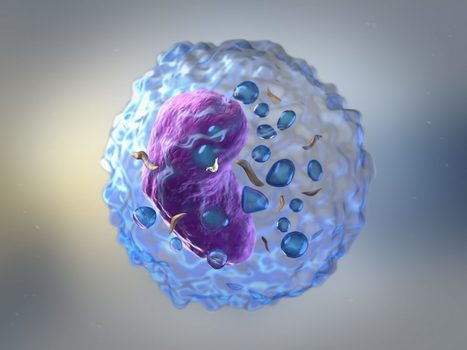
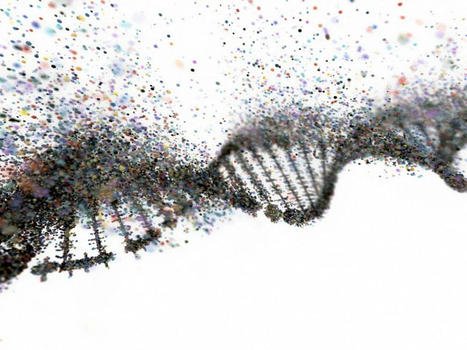

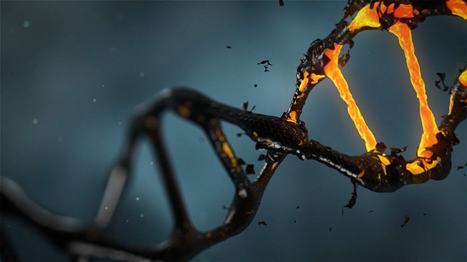

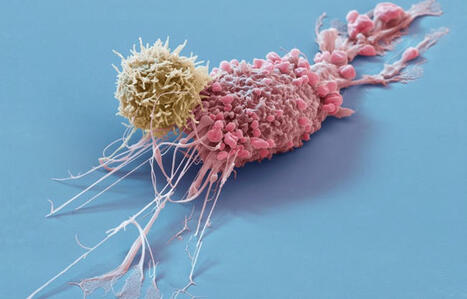
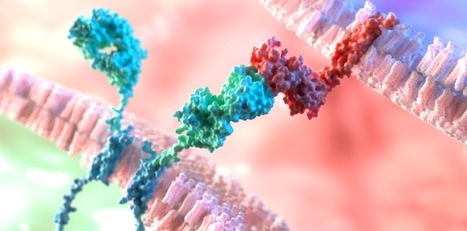





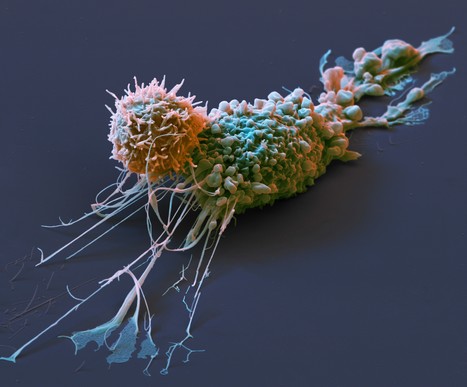
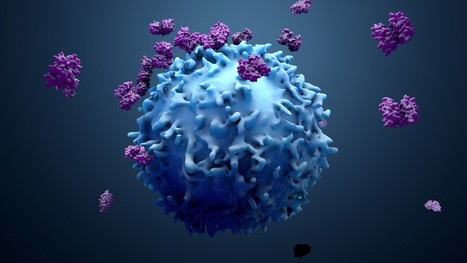

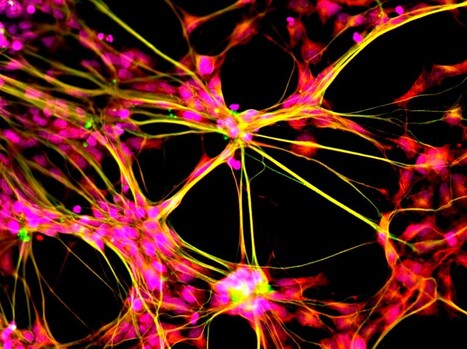
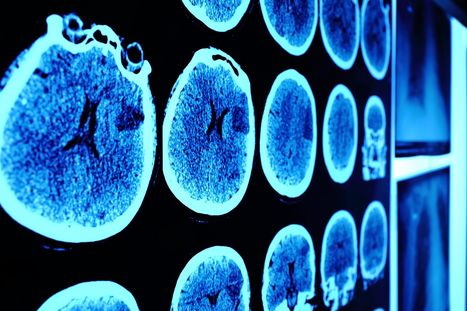








A vast search of natural diversity has led scientists at MIT’s McGovern Institute and the Broad Institute of MIT and Harvard to uncover ancient systems with the potential to expand the genome editing toolbox.